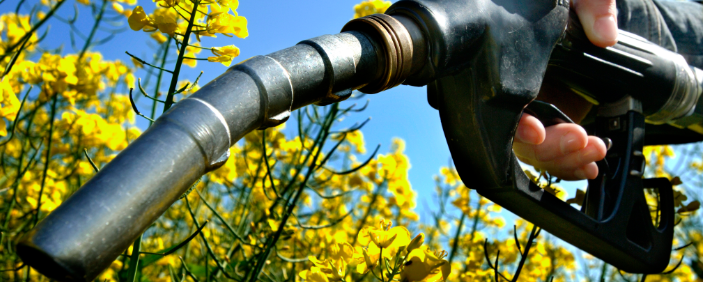
To replace fossil fuels, renewable energies are developing: wind, solar and biofuels. Under our feet and in the fields is indeed one of the most abundant sources of carbon!
Biomass: renewable energy at the disposal of sustainable development
Plants that grow on the surface of the earth capture solar radiation, absorb carbon dioxide from the atmosphere, and draw water and minerals into the soil to create organic matter for development.
All plant organs, such as seeds, roots, stems or leaves, can become sources of energy or fuel thanks to their composition in oils and glucoses. But some plants are better than others!
Two types of biofuels
There are two main types of first-generation biofuels: diester for diesel engines, and bioethanol for gasoline engines.
- The diester is derived from vegetable oils of rapeseed, sunflower or soy. It is used in mixture with diesel fuel.
- Bioethanol comes from plants rich in sugar such as sugar cane or sugar beet. It can also be obtained from plants with high starch content: wheat, corn, potatoes …
Diester: a question of oils
For the diester, the fatty acid composition of the vegetable oils is decisive because the oils must be very stable with respect to the heat.
In this perspective, sunflower is a particularly interesting plant because its oil is composed of a wide variety of fatty acids. In 2006, a breeding program was initiated from 76 ecotypes of sunflower.
Bioethanol: a question of sugar and starch …
Bioethanol is an alcohol made from the fermentation of sugars or starch from plants. It can be incorporated into gasoline in varying proportions, or used pure. In this case, the motors must be specially adapted.
Should we adapt the plants?
Yes, because for biofuels to be economically viable, the plant must be as easy to process as possible. The breeders therefore look for varieties more interesting. For sugar cane and beet, the high sugar content, therefore potentially alcohol, is a permanent selection criterion. As for wheat, corn and potato, research is currently focusing on starch content and quality.
Do biofuels compete with food needs?
Biofuel production has generally developed in addition to food production and not as a substitute. Although potential competition with food production remains a matter of vigilance, it has allowed many countries to be less dependent on oil imports and to create employment-intensive production chains.
In addition, the current trend is to transform “waste” from field crops (eg, corn stalks and leaves) or to produce biofuels from non-food, less input-intensive crops.
Diester and environment: some figures
The fuel diester reduces black smoke and particulate emissions by 20%, carbon monoxide and toxic compounds by 10% (source PROLEA *). The incorporation of the diester can reach 30% in the diesel fuel of vehicles that can refuel at a single pump because of a limited distance: buses, garbage trucks … A vehicle running with 30% diester in its diesel reduces nearly 25% of its greenhouse gas emissions. One ton of diester consumed saves around 2.5 tons of CO2 equivalent. * PROLEA: the French industry of vegetable oils and proteins .
Great article. Good to understand for everyone.